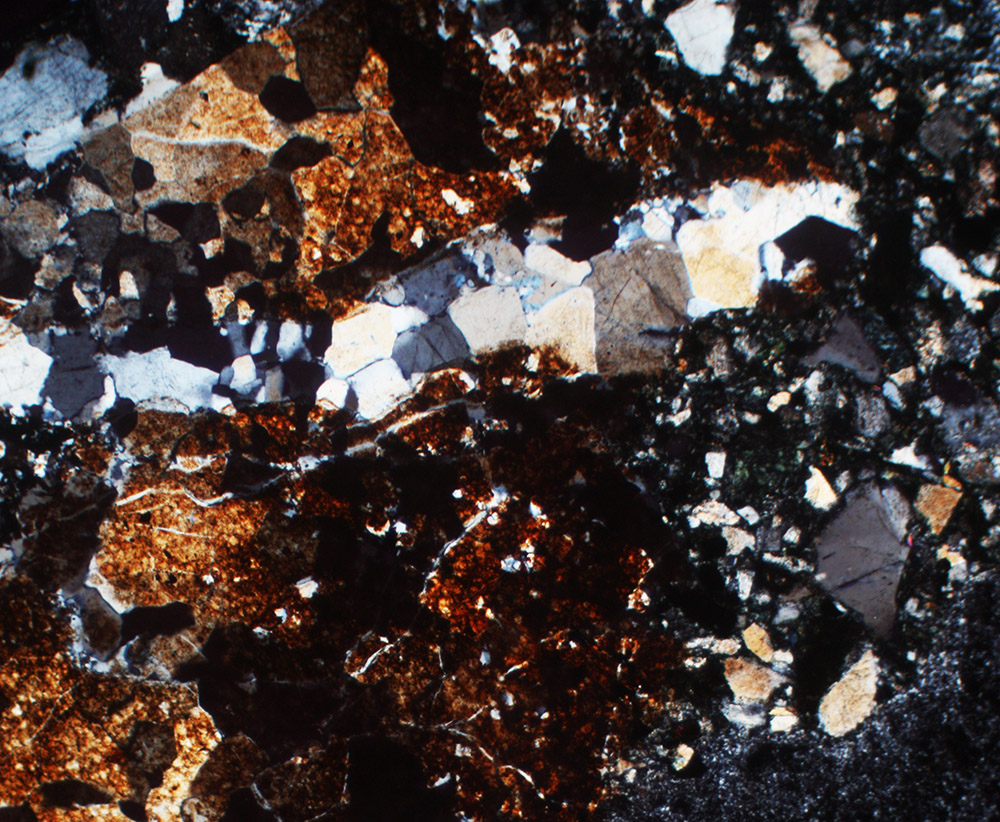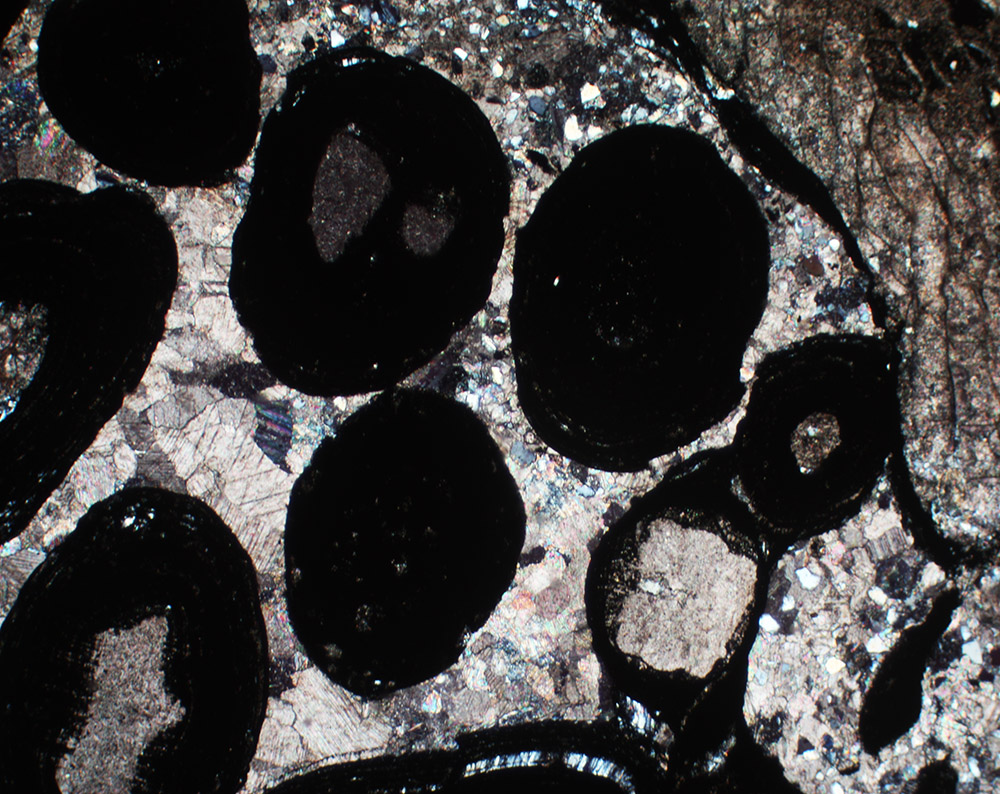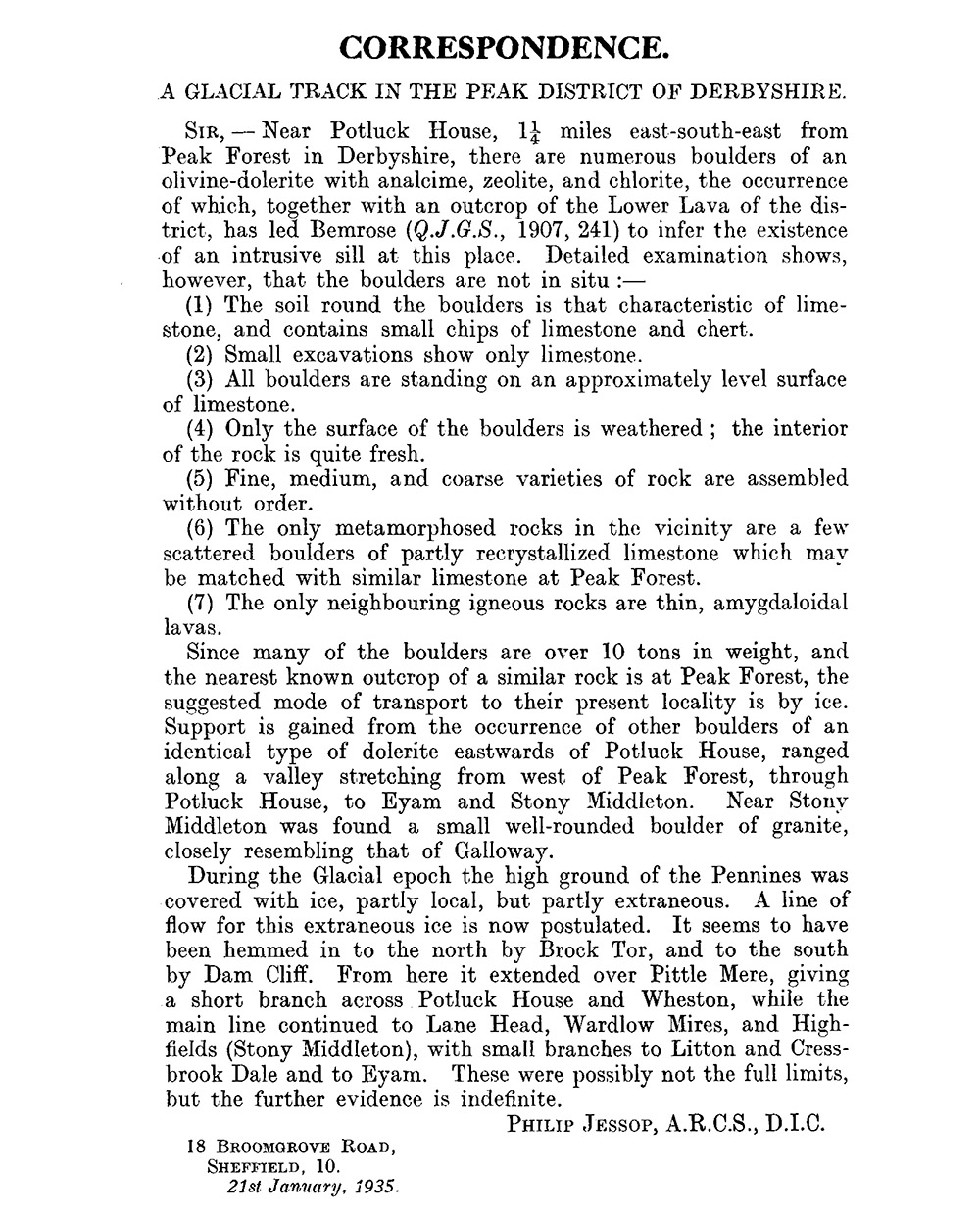
Figure 1. Two microscope slides of thin-section minerals, prepared in 1927 by Philip Jessop. The significance of the numbers on the upper labels is not known.
Philip Jessop, 1907-1985
by Brian Stevenson
last updated Ocrober, 2022
Philip Jessop was a professional geologist, so it is presumed that the mineralogical microscope slides that bear his labels were produced for commercial purposes (Figure 1). His known slides are well-prepared thin sections of rocks, sands, and other mineral specimens. The examples shown in Figures 1-3 are dated 1927. Other known Jessop slides bear dates between 1926 and 1933.

Figure 1.
Two microscope slides of thin-section minerals, prepared in 1927 by Philip Jessop. The significance of the numbers on the upper labels is not known.

Figure 2.
“Haggis rock” conglomerate thin section, prepared by P. Jessop. Photographed with crossed polarizing filters, a 3.5x objective lens, and a C-mounted digital SLR camera on a Leitz Ortholux II microscope.

Figure 3.
Thin section of oolitic ironstone, prepared by P. Jessop. Photographed with crossed polarizing filters, a 3.5x objective lens, and a C-mounted digital SLR camera on a Leitz Ortholux II microscope.
Philip Jessop was born in Eccleshall, Yorkshire, England, on February 9, 1907. He was the second child, and second son, of Ernest and Emma Jessop. The 1911 national census recorded that father Ernest worked as an “art decorator, house furnisher”.
After the 1911 national census, when Philip Jessop was 4 years old, the next record of him that that I located was a 1931 paper by Jessop on “Agate, and the cherts of Derbyshire” (Figure 4). The byline stated that he was “D.I.C.” (Diplomate of the Imperial College) and “A.R.C.S.” (Associate of the Royal College of Science).
Another paper by Jessop, “A glacial track in the Peak District of Derbyshire” was published in Geological Magazine in 1935 (Figure 5). His address was given as 18 Broomgrove Road, Sheffield, Yorkshire.
Jessop took at least two international trips during the later 1930s, presumably associated with his geological work. Traveling alone, he left from Liverpool on April 24, 1935, and returned from Ivory Coast on April 13, 1936. In 1939, sailed to Trinidad.
The 1948 subscription list of The National Cactus and Succulent Journal listed Jessop as “Capt. P. Jessop”. I found a record of a Captain J.P. Jessup on the Royal Indian Army Service Coprs during World War 2, which may have been our geologist/microscopist.
Jessop married Mabel Andrew during the spring/summer of 1946, in Sheffield.
I have found little more about Philip Jessop. He still lived at 18 Broomgrove Road, Sheffield in 1957, according to the local telephone book.
Philip Jessop died during the spring of 1985, in the area of Bakewell, Derbyshire.

Figure 4.
First page of Philip Jessop’s 1931 paper on Derbyshire agates. From The Proceedings of the Geologists' Association.

Figure 5.
Philip Jessop’s 1935 paper on a glacial trackway in Derbyshire. From The Geological Magazine.
Resources
England census, birth, death, outbound/inbound passengers, military, and other records, accessed through ancestry.com
Jessop, Philip (1931) Agate, and the cherts of Derbyshire: With a brief account of the history of the Lower Carboniferous limestone of the Peak District of Derbyshire, Proceedings of the Geologists' Association, Vol. 42, pages 29-43
Jessop, Philip (1935) A glacial track in the Peak District, Derbyshire, Geological Magazine, Vol. 2, page 96
Marriage record of Philip Jessop and Mabel Andrew (1946) accessed through ancestry.com
The National Cactus and Succulent Journal (1948) Members
Sheffield Telephone Book (1957) “Jessop Philip, 18 Broomgrove rd, 10, Sheffield 60827”